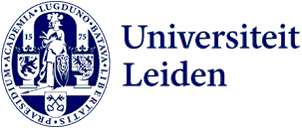
Vici grants for seven researchers from Leiden University
From research on stellar winds to sign language: an impressive seven researchers from Leiden University will receive a prestigious Vici grant from the Dutch Research Council (NWO).
A grant of up to 1.5 million euros will enable the laureates to develop an innovative line of research and set up their own research group over a period of five years. The Vici is one of the largest scientific grants for individuals in the Netherlands and targets advanced researchers. A total of 35 researchers will receive a grant. These are the laureates from Leiden University:
Elena Maria Rossi (Leiden Observatory)
Supermassive black holes today have at least a million times the mass of our Sun, but we know they were born small in the infancy of the Universe: the mystery is how. This project looks at the lighter ones – those that grew less than the others – to more directly find clues on their origin. Rossi will exploit the light coming from the disrupted stars, which these baby giants rapaciously eat, combining state-of-the-art simulations and the wealth of current data.
Aline de Almeida Vidotto (Leiden Observatory)
Exoplanets do not exist in the vacuum of space. Rather, they are embedded in a sea of stellar radiation and stellar outflowing particles, known as stellar winds. Vidotto will investigate how stellar radiation and winds interact with the leaking atmospheres of exoplanets. She will use three-dimensional numerical simulations that treat several chemical species individually. These chemical species have their own unique ‘fingerprints’ that can be identified through telescope observations. By comparing our simulation results with observations, this investigation will tell us what happens in the leaking atmospheres of exoplanets that are not too far from us.
Also read an article on the research done by the Leiden Observatory staff.
Jenneke van der Wal (Centre for Linguistics)
In a conversation, you give all sorts of extra information to the addressee through language, for example whether the message is surprising, how certain you are or what the source of the information is. Van der Wal aims to chart how this extra information is organised in our minds, focusing on how African languages express the knowledge of the speaker and the addressee. This will enable her to discover whether this organisation is the same for people or influenced by the language you speak.
Petra Sijpesteijn (Institute for Area Studies)
In the early Middle Ages, the Middle East obtained the language, religion and appearance that continue to characterise it today. Yet we do not understand well how this happened. The traditional explanation that rulers imposed their will onto the land and its people does not clarify why changes occurred across political frontiers and why it was so durable. Sijpesteijn will look at cultural transformation in a very different way, namely how the inhabitants made the land they lived in part of the Islamic empire through stories and physical alterations.
Victoria Nyst (Centre for Linguistics)
The history of sign languages of deaf people is severely understudied. The historical linguistics of sign languages offers a fundamentally new perspective on the history of human languages. Nyst will address the social and linguistic histories of sign languages in Europe and West Africa, using new historical data and newly collected contemporary data. It generates a paradigm for an integrated approach to historical sign language linguistics. Crucial knowledge is stored in the memory of older deaf signers, and many sign languages are endangered. Nyst’s project will contribute to the preservation of the intangible heritage of deaf communities.
Saskia Lesnik Oberstein (LUMC)
One in 300 people worldwide are carriers of hereditary NOTCH3-dementia. NOTCH3-carriers develop protein clumps in the vessel walls of small brain arteries. This can cause vascular dementia because of a shortage of blood flow to the brain. Some NOTCH3-carriers develop dementia at a young age, some when they are older and some never do. Why dementia risks vary so strongly is unknown. The researchers will investigate whether this is explained by differences in vessel protein clumps of patients with severe or milder NOTCH3-dementia. The goal is to better predict dementia risk in NOTCH3-carriers and to identify novel therapeutic targets.
Puck Knipscheer (LUMC)
Knipscheer is being awarded for her research on a cell's ability to troubleshoot misfolded DNA structures. Most of our genetic material is folded into a neat double helix. Before a cell can divide, the DNA must be copied very precisely. Sometimes knots of some kind arise in the DNA strands, which can lead to all kinds of problems. Thi research will investigate what mechanisms a cell has at its disposal to untangle these DNA knots and thus keep the genetic material stable.
